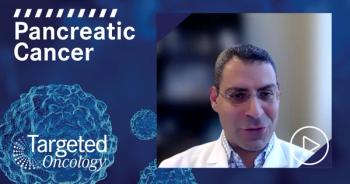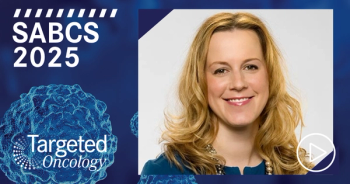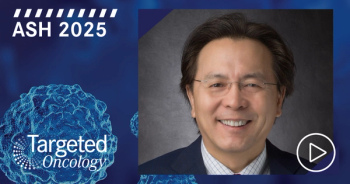
Pharmacist-Led Initiatives Drive Cost Reduction in Oncology Care
Daniel Kendzierski, PharmD, a senior clinical pharmacist at McKesson Specialty Health, The US Oncology Network, The Woodlands, TX, discusses an abstract from the 2025 American Society of Clinical Oncology (ASCO) Annual Meeting in an interview with Targeted OncologyTM.
The escalating cost of cancer care, projected to exceed $245 billion by 2030, largely due to expensive cancer drugs, highlights the critical need for cost-effective strategies. In response, the Centers for Medicare and Medicaid Services (CMS) launched the Enhancing Oncology Model (EOM), a voluntary, risk-based payment model designed to improve care quality while simultaneously reducing the total cost of care (TCOC).
A new study from The US Oncology Network, which represents approximately 50% of all EOM providers nationwide, demonstrates the significant impact pharmacists can have in achieving these cost reductions. In The Network, drug costs represent an average of 63% of a patient's TCOC, underscoring the potential for medication-focused interventions.
The study employed clinical review pharmacists (CRPs) who remotely reviewed oncology treatment orders for cost-saving opportunities. These opportunities included initiatives such as monoclonal antibody (mAb) dose rounding, pembrolizumab (Keytruda) dose banding, biosimilar therapeutic interchange (TIC) to preferred products, and preferred use of zoledronic acid. CRPs updated eligible treatments based on practice protocols or after consultation with oncologists.
From July 2023 to December 2024, 7 CRPs across 5 EOM-participating practices evaluated over 5600 patients, identifying 1271 interventions. Of these, an impressive 1180 were accepted, leading to a TCOC reduction of nearly $9 million. Beyond the 6 primary initiatives, CRPs contributed an additional $1.2 million in medication savings through other drug selection optimizations.
Pembrolizumab dose banding and the preferred use of zoledronic acid emerged as the largest contributors to these savings. These findings strongly support the value of pharmacist-driven interventions in lowering costs and fostering the success of value-based care models within oncology practices.
The investment in a CRP proved highly valuable for community practices, costing approximately $25,000, according to Kendzierski. This yielded significant financial returns and offered additional benefits.
CRPs actively contributed to saving providers valuable time by leveraging their deep understanding of available clinical resources, such as pembrolizumab dose banding. They developed and implemented medication protocols, streamlining changes that, with initial approval, could be made independently. This not only benefited the practices financially but also potentially saved patients time and helped practices meet critical benchmarks within the EOM and other value-based care initiatives. Ultimately, these substantial total cost of care savings benefit patients, practices, and CMS.








































